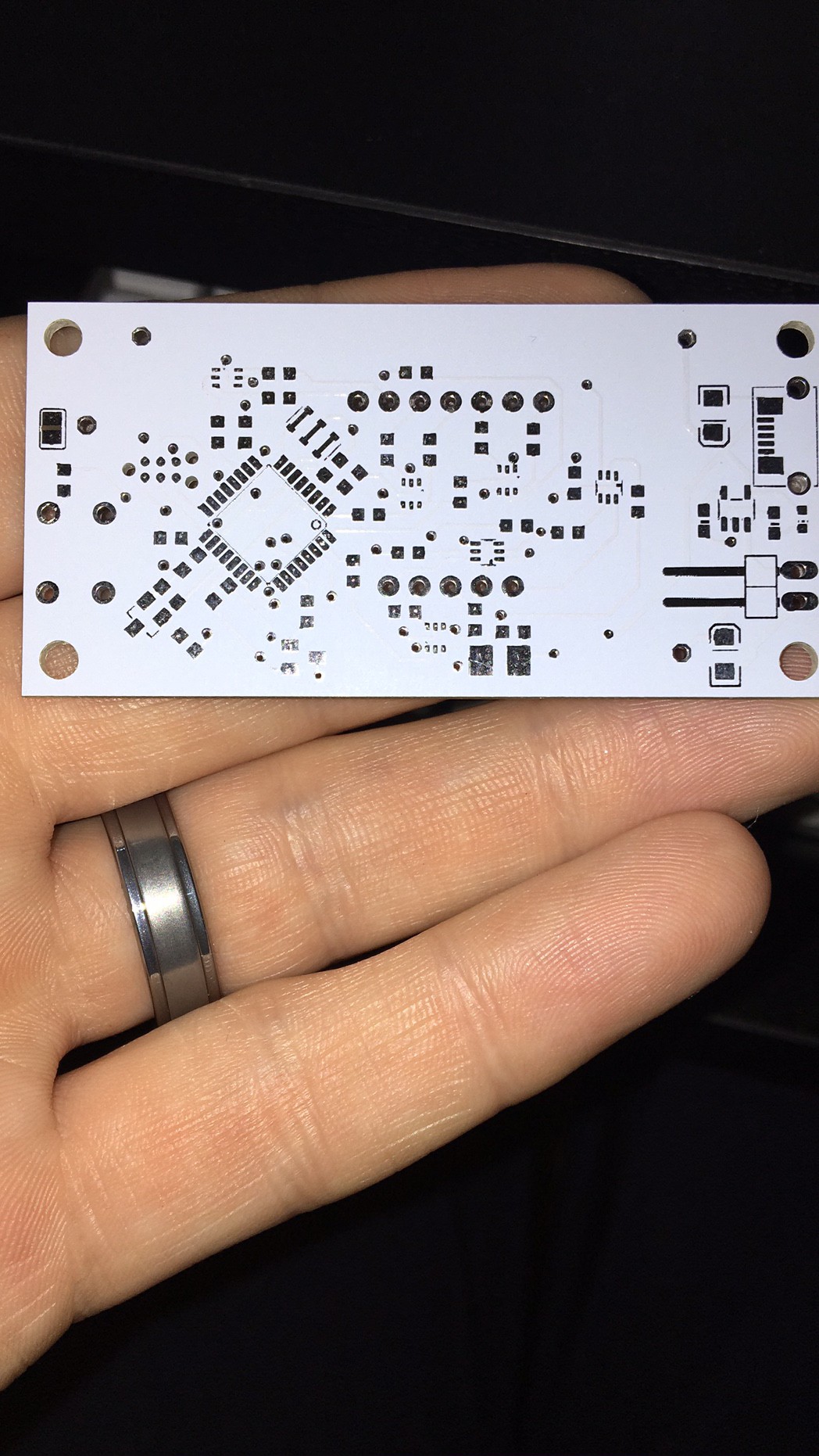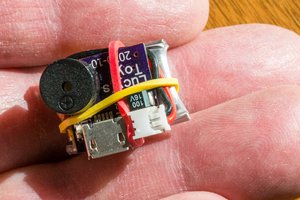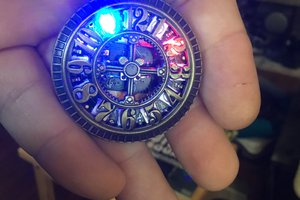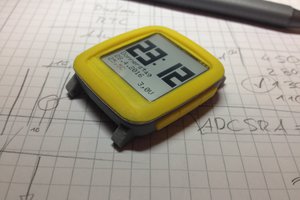The box's interface is as simple as possible: there's only one button. When the clock is off, press the button and the clock will start. If the button is pressed and released quickly while running, the clock will reset to zero and start over. If the button is pressed and held for 2 seconds, the box will measure the battery voltage and display it, then go to sleep when the button is released. If the box is left alone, it will count to 99:59 and then shut itself off. The AVR in deep sleep mode draws virtually no current, prolonging battery life. The 1000mAh lipo battery can be charged via a micro USB port on the side of the box.
The intensity of the display is adjustable by pressing and holding the button for > 4 seconds. The box will go into an 'intensity set' mode where intensity options from 1-9 are displayed. When the desired intensity is reached, releasing the button will reset the clock to zero and store the new intensity setting in onboard EEPROM.
A jumper allows the box to be powered directly from USB 5V rather than via the battery. If running the box this way, circuitry to measure battery voltage can be used to measure some external DC voltage, giving the option to make this a simple, USB-powered voltmeter. The box can be put in 'voltmeter mode' by setting a 2nd jumper on board. By default, the maximum voltage that can be read is ~4.5V, as the voltage reading was intended for a battery voltage with a max charge of ~4.2V. It is very simple to increase the voltage range (at the expense of resolution) with a few modifications to hardware/firmware as outlined in the manual.
 roger_archibald
roger_archibald

 Bud Bennett
Bud Bennett
 Joshua Snyder
Joshua Snyder
 Max.K
Max.K
 ipaq3115
ipaq3115